Now Reading: Top 10 Best Places to Visit in Phayao – Lakes, Temples & Natural Beauty
-
01
Top 10 Best Places to Visit in Phayao – Lakes, Temples & Natural Beauty

Top 10 Best Places to Visit in Phayao – Lakes, Temples & Natural Beauty
1.Kwan Phayao
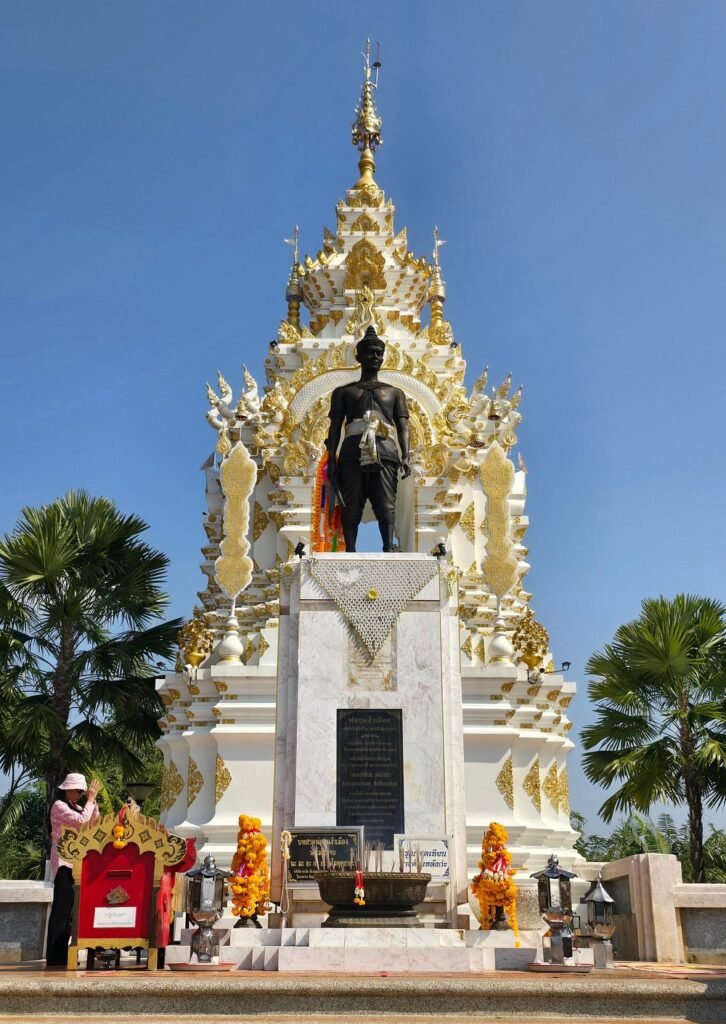
Found in the middle of Phayao Province, northern Thailand, Kwan Phayao is a naturally beautiful freshwater lake that goes by the name Phayao Lake. Thanks to its calm water and green setting with lots of history, it acts as a key place for wildlife as well as a beloved cultural area.
Natural features and why they matter
Encompassing about 1,980 hectares, Kwan Phayao is the highest and fourth biggest lake in all of Thailand. The Ing and Tam Rivers both supply water to the lake which supports about 50 different species of fish and a rich array of aquatic plants. Over the years, fishing and agriculture have provided for local people because they live in a fertile area .
Looking at the lake from the range of Doi Mae Chai mountains gives a beautiful sight during both sunrise and sunset. Brightly flowered and lush, the lakeside walkway is a peaceful spot for people to enjoy walks and a break.
Historical Background
The area where Kwan Phayao is located was formed about 70 million years ago because of a collapse in the earth’s crust. Nevertheless, the system we have now was developed during the 20th century. In 1939, the Ing River was dammed by the Department of Fisheries in order to create a reservoir for fisheries and to supply a steady water level. The results of this change were a body of water which covered the city and several temples and villages, one example being Wat Tilok Aram.
Sediment built up and invasive aquatic plants began to take over the lake. Thanks to restoration projects that came from King Bhumibol Adulyadej’s water management ideas, the lake was restored by 2009. The main steps were setting up sediment traps, pulling weeds and adding fish to the lake, resulting in an improved capacity and a healthier environment .
Cultural as well as Spiritual Significance
There is strong social and religious significance to Kwan Phayao. During important Buddhist celebrations such as Makha Bucha, Asalha Bucha and Visakha Bucha, Wat Tilok Aram temple, submerged for 500 years, attracts many. Offerings are often made on the lake by boat which are a common part of ceremonies.
Not far from here, Phra Chao Ton Luang, the biggest Chiang Saen-style Buddha in Thailand, is housed at Wat Si Khom Kham and measures 16 meters by 14 meters.
The Most Recommended Best Season
It’s best to visit Kwan Phayao while the weather is cool, between the months of November and February. In addition, this time includes many cultural festivals which gives guests a chance to enjoy cultural activities.
2.Phu Langka Forest Park
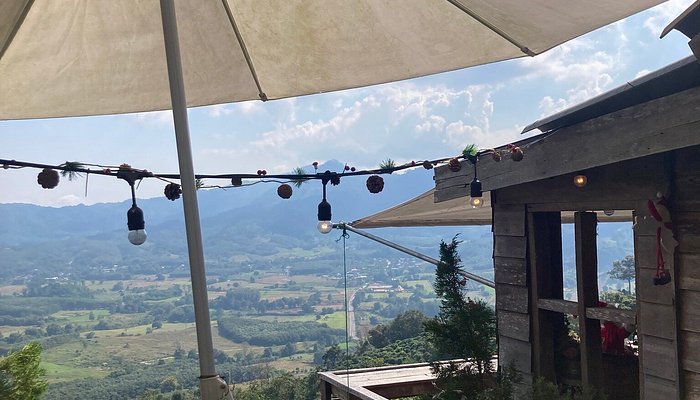
Phu Langka Forest Park, in Phayao Province, gives those who love nature and culture a calm and peaceful experience. In 2002, on May 8, the area was declared and it covers approximately 12.48 square kilometers in Phi Pan Nam Range, joining both Chiang Kham and Pong Districts.
The park is well known for its wonderful views, including early morning fog that dresses the valleys in mystery. The area is marked by various hills, among them Doi Hua Ling and Doi Phu Lang Ka and the Doi Phu Nom, special for having a breast-shaped hill right beside the grasslands.
Credit for the park’s impressive diversity goes to its hill evergreen forests which hold many plants such as the Dok Khlongkhleng (Melastoma malabathricum), Wightia speciosissima, Colquhounia elegans and Dendrobium heterocarpum . Many types of animals live in these ecosystems which draws enthusiastic wildlife watchers.
🕰️ The Impact on People’s History and Culture
The area, besides its looks, is also important for its culture and history. In the language of the Mien people, “Phu Langka” refers to “Mountain of the Gods,” which represents the legends of protecting gods. It is said that a villager tried to acquire fruits from the mountain, fell totally off the track and no one ever saw him again, highlighting the significance given to the area.
Also, there are discoveries from Thailand’s past inside the park such as trenches and caves once used by communist rebels, allowing people to see the country’s complicated history .
The best months to visit are March, April and May.
The perfect time to see Phu Langka Forest Park is between November and February. At this time, you’ll experience pleasant weather and be greeted by lovely views of morning mist. Visitors may enter the park every day during the hours of 6:00 AM and 6:00 PM.
3.Wat Tilok Aram
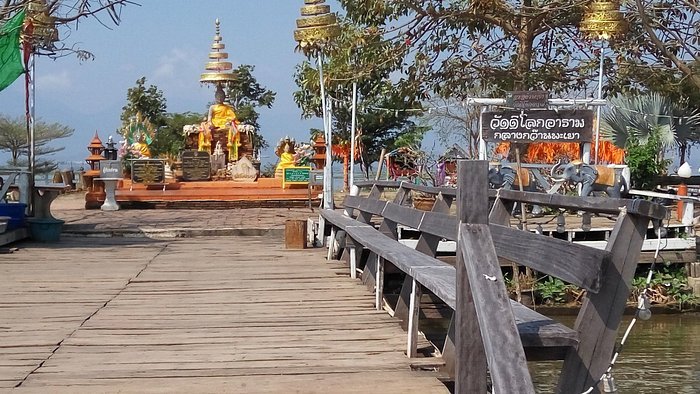
The Buddhist Temple Wat Tilok Aram is situated 5km from Kwan Phayao in the calm waters, making it one of a kind. Because it blends history, spirituality and nature so well, this sanctuary has become a favorite destination for those touring Phayao Province.
- Historical Significance
- Starting in 1476 and continuing until 1486 under King Tilokkarat, Wat Tilok Aram was built at a site that was then dry. In 1939, the Department of Fisheries constructed a dam to hold water for irrigation and fisheries which caused the temple and the nearby area to be submerged by Kwan Phayao Lake .
- Even being submerged, the temple continues to influence people. A San That Klang Nam or as it is known locally a brick chedi, rises from the waters of the lake, letting people remember the area’s historic significance.
- When Should You Visit
- A trip to Wat Tilok Aram is best from November to February, when the weather is pleasant and dry. At this time of year, the water levels are lower and the milder weather lets us see the remaining buildings in the lake more clearly. A great time to visit is when Buddhist festivals take place to observe the unique ceremonies at the temple.
4.Wat Nantaram
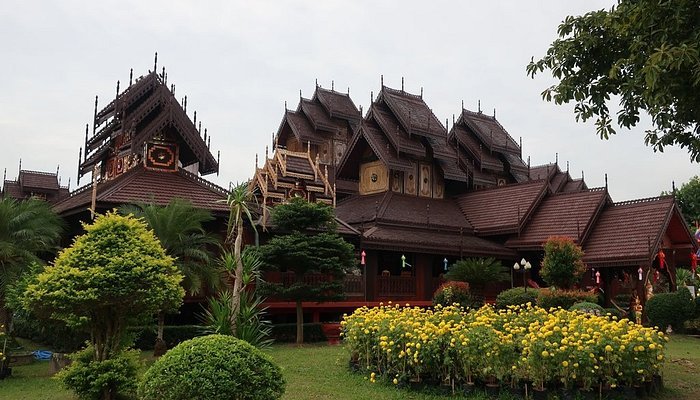
At Wat Nantaram in Chiang Kham, Phayao Province, visitors can see beautiful Shan (Tai Yai) and Burmese styles blended, giving them a peaceful and interesting experience.
The site is significant because of its history and architecture.
Wat Nantaram was constructed in 1925 and its teakwood building is richly decorated with elaborate fretwork on the windows, gables and verandahs. This temple’s architectural style reflects the strong Shan and Burmese traditions found at that time in the region.
Visitors to the viharn (assembly hall) will find the Phrachao Saen Saeo Buddha statue, a respected statue made from golden teakwood with Mandalay features.
- Hit and Run is available from 8:00 AM to 6:00 PM on all days.
- The most beautiful time to look is in early morning or late afternoon, when the sunlight makes the temple look beautiful.
5.Wat Analayo Thipphayaram
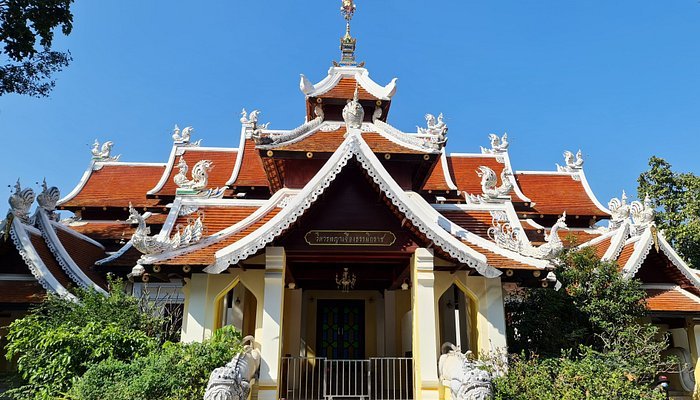
Just 20 kilometers northwest of Phayao town and set upon Doi Butsarakham, Wat Analayo Thipphayaram is a peaceful place for those wanting to understand their spirits and the wonders of the natural world. Covered by green trees and seen across wide plains, this enormous temple complex represents Thailand’s strong religious identity.
Historical Significance
Luang Pu Khao Analayo began Wat Analayo Thipphayaram in the late 1990s and the monk became well known in Thai Buddhism for his teachings and meditation methods. Luang Pu Khao wanted the temple to be a space for calm, learning and peaceful thought, exactly what he believed in. Over the course of several years, Mahabodhi has turned into a major religious destination, drawing followers and sightseers from throughout the region.
When Should You Visit
The months from November to February are ideal times to go, when it is pleasant outside and the trees are in beautiful full bloom. Mornings are peaceful, thanks to the quiet, dim sunlight and a smaller number of people walking around.
6.Wat Si Khom Kham
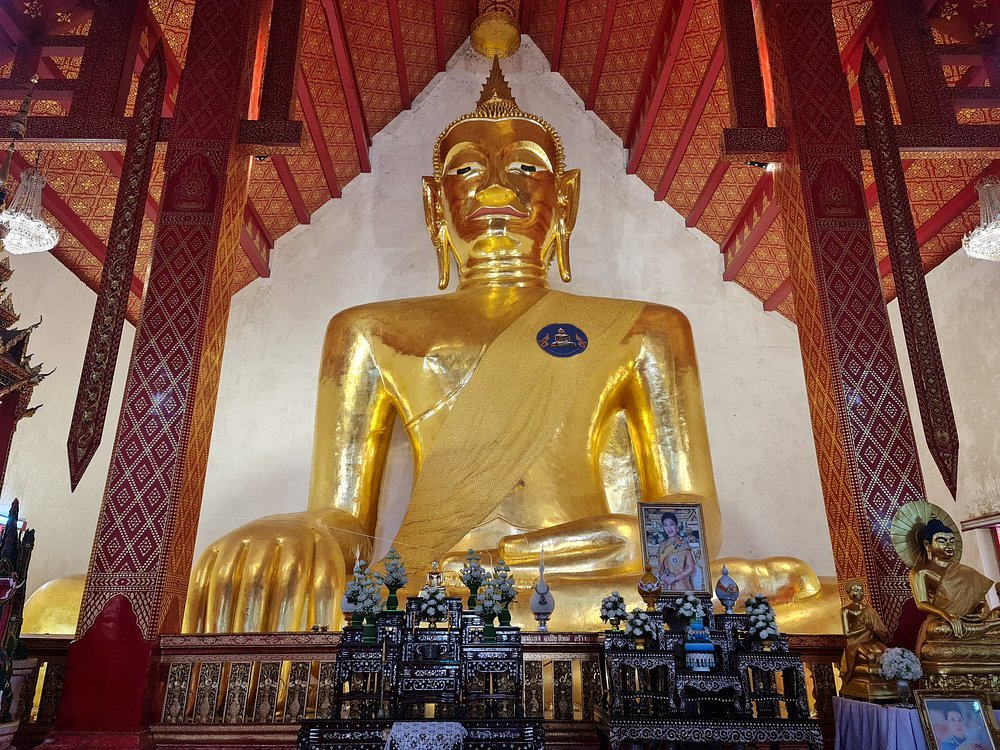
The temple of Wat Si Khom Kham lies calmly by the banks of Kwan Phayao in northern Thailand and is respected by Buddhists. Famous for its large Buddha statue and intriguing sculpture garden, the temple gives guests a taste of religious importance, striking artworks and a glimpse into the culture.
Historical Significance
Wat Si Khom Kham was built in the 12th century and the current building was finished in 1923. The beloved Phra Chao Ton Luang Buddha figure was struck between 1491 and 1524, during the time when the Lanna Kingdom reigned. The statue is the biggest Chiang Saen-era Buddha image in the country, measuring 16 meters from top to bottom and 14 meters wide. Its creation demonstrates the highest point of artistic and spiritual values present during the period.
Museum Pieces and Cultural Important Objects
This temple contains an on-site museum filled with Buddhist artifacts, books, antique scripts and pieces from the local region’s Buddhist heritages. The history of the people’s spirituality and traditions in Phayao Province can be found in this repository.
- Where is it? Wat Si Khom Kham is found less than 2 kilometers from the center of Phayao town.
- You will experience the best harmony at the temple if you visit either early in the morning or late in the afternoon, when the area is peaceful and the lighting is soft over the lake and the buildings.
7.Doi Phu Nang National Park

The Doi Phu Nang National Park in Phayao Province of Thailand is a little known spot with stunning scenery, calm waterfalls and many species of wildlife. Established in 2012, this park covers nearly 860 square kilometers over the Dok Khamtai, Pong and Chiang Muan districts.
Landforms and Nature
- The Than Sawan Waterfall
- Visitors to the park particularly like the Than Sawan Waterfall which has two levels and stands 20 meters high and 40 meters wide. Only a short 300 meters from the park’s headquarters, this waterfall has green waters and lush forests nearby, so visitors enjoy swimming and simple picnics there.
- Phueng Pueng Waterfall
- You will find the 80-meter-high Huai Ton Phueng Waterfall about 11 kilometers from the park office and it can be reached on a delightful 1-kilometer stroll through shaded woods. Enjoying the trail means being surrounded by peaceful nature.
- Kaeng Luang Rapids
- If you enjoy adventure sports, the Kaeng Luang Rapids give the chance for white-water rafting in the rainy season. In this period, the dry season makes the bare rocks excellent for enjoying views and taking photos .
- Bo Liang Shan Reservoir
- No place is better for seeing mountains and rivers during sunrise than the Huai Yua Reservoir. Much of the time, the area is covered in a magical mist each morning during winter.
- The Top Times for Travel
- A visit to the park is best between November and February, as the temperatures are pleasant and the scenery is most beautiful at that time.
8.Phu Sang National Park

The park which lies in Phayao Province, Thailand, attracts people with its special warm waterfall, various natural habitats and peaceful paths for hiking. Measuring some 285 square kilometers, the park lets people enjoy the natural peace and beauty.
Natural Attractions
Big Phu Sang Waterfall
Phu Sang Waterfall stands out in the park because it is an unusually warm waterfall at 33-35°C. Thanks to a hot spring, the water from the waterfall runs over a 25-meter tall cliff, making the area great for relaxing and paddling. You will find attractive picnic areas and a café nearby for refreshment, since the surroundings are well looked after.
- The ideal time to visit Central America
- Visiting Phu Sang National Park between November and February is recommended because the pleasant coolness and lush greenery are best seen then.
9.Phra Tamnak Kwan Phayao and Phayao Fresh-water Fishery Station
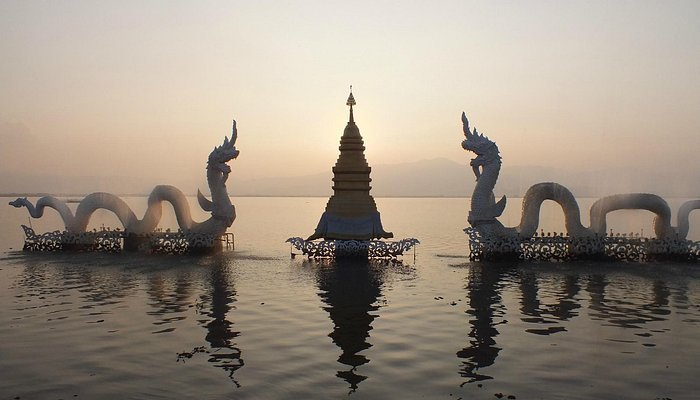
Phraya Tamnak Kwan Phayao and the Fresh-water Fishery Station sit by a lake in Phayao Province, northern Thailand, letting visitors enjoy a mix of wildlife, educational displays and lots of open space.
Kwan Phayao Lake, the largest freshwater lake in northern Thailand and the fourth biggest in the country, occupies 1,980 hectares. When the Department of Fisheries created it by building a dam between 1939 and 1941, the lake quickly made the area a rich resource for fishing and farming.
Opened in 1935, the Phayao Fresh-water Fishery Station is used for research and to develop new techniques in freshwater fishery. It was the world’s first resource to carefully breed Mekong giant catfish (Pla Buk). Inside the station is an aquarium with many fish and aquatic plants, teaching people about the area’s aquatic life.
Visiting Information
- Phayao City, Phayao Province, Thailand
- You can get here easily using our city’s buses and trains and parking isn’t an issue.
- There are an aquarium, areas for having picnics, walking routes and public restrooms.
- The best time to visit for comfortable weather and lovely sights is in the early morning or late in the day.
10.Wat Phra That Chomthong
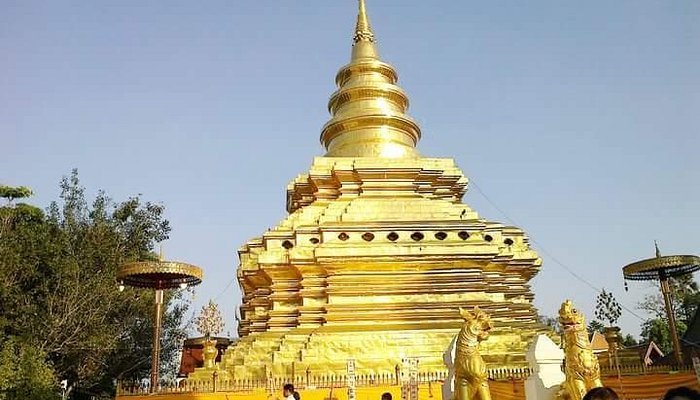
Wat Phra That Chom Thong which sits high on Doi Chom Thong hill in Phayao City, Thailand, provides peace, spiritual tradition, a rich history and amazing views of the area and Kwan Phayao Lake.
What makes it important in terms of history and culture
Locals say that Wat Phra That Chom Thong was founded before Phayao, making it over 1,200 years old. Chom Thong means “viewing gold” in Thai and is named for the temple’s main gold-covered stupa. This Lanna-style chedi is 30 meters tall and its base is nine meters wide, with carvings of the entire zodiac, a Lanna artistic tradition. Thai Buddhists visit the Sala Kaew Ku Hot Spring because it is said to safeguard Buddha relics and contain sacred energy.
The grounds around the temple are covered with trees, making the place quiet and perfect for meditation. Those visiting the temple are able to reach it by climbing an ornate Naga (serpent) staircase surrounded by greenery. Enjoying the views of Phayao City and Kwan Phayao Lake is easier from the top, especially as the sun rises or fades.
Related articles : Top 10 Best Places to Visit in Phetchabun – Temples, Nature & Adventure
Stay Informed With the Latest & Most Important News
Previous Post
Next Post
-
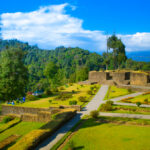 01Top 5 Best Places Visiting in Gyalshing – Monasteries, Lakes & Scenic Escapes
01Top 5 Best Places Visiting in Gyalshing – Monasteries, Lakes & Scenic Escapes -
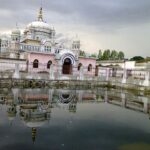 02Top 5 Best Places Visiting in Panna – Temples, Waterfalls & Wildlife Escapes
02Top 5 Best Places Visiting in Panna – Temples, Waterfalls & Wildlife Escapes -
 03Top 5 Best Places to Visit in Malerkotla – Malerkotla Fort, Sheesh Mahal & More
03Top 5 Best Places to Visit in Malerkotla – Malerkotla Fort, Sheesh Mahal & More -
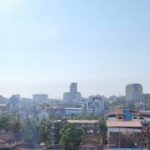 04Top 10 Best Places Visiting in Dakshina Kannad for Culture, Nature & Coastal Charm
04Top 10 Best Places Visiting in Dakshina Kannad for Culture, Nature & Coastal Charm -
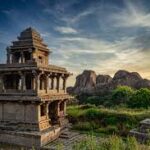 05Top 2 Best Places Visiting in Chitradurga for History, Nature & Adventure
05Top 2 Best Places Visiting in Chitradurga for History, Nature & Adventure -
 06Best Places Visiting in Shopian – Explore Top Attractions & Hidden Gems
06Best Places Visiting in Shopian – Explore Top Attractions & Hidden Gems -
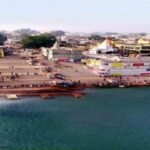 07Best Places Visiting in Narmadapuram – Temples, Waterfalls & Wildlife Escapes
07Best Places Visiting in Narmadapuram – Temples, Waterfalls & Wildlife Escapes












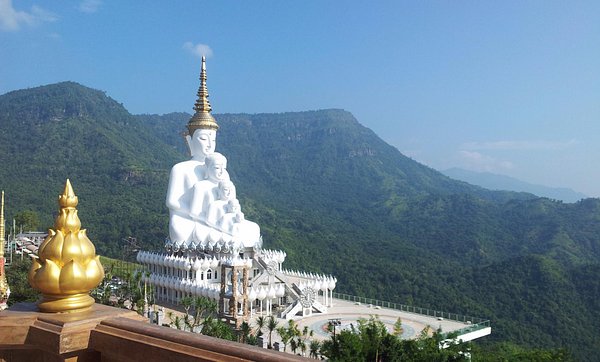

Pingback: Best Places to Visit in Phatthalung – Explore Nature, Culture & Attractions